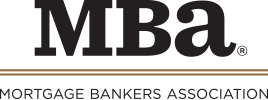
Auction.com: CRE Showing Signs of Stabilizing
The commercial real estate market shows some signs of stabilizing following a multi-year run-up and appreciation period, reported Auction.com, Irvine, Calif.
Auction.com said after CRE deal volume bucked its typical cyclical trend by increasing in the first quarter, volume declined 14.6 percent in the second quarter to $112.4 billion–though it remains 24 percent higher than a year ago. The second quarter dip marked the first time since 2008 that total five-sector deal volume dropped quarter over quarter.
“It’s unclear whether the second quarter drop in sales volume is the beginning of a slowdown in the CRE market, or simply an adjustment from an unusually strong first quarter,” said Auction.com Executive Vice President Rick Sharga. “What’s clear is that all of the major CRE sectors continue to perform far better than they did a year ago and may be strong enough to withstand a potential decline in international investment activity due to the economic issues in China and Europe.”
Auction.com reported that office sector deal volume declined 3.7 percent on the quarter but remained 24.1 percent higher than a year ago; industrial volume fell 18 percent but stayed up 39.8 percent year-over-year; retail volume dipped 28.1 percent from the first quarter but remained 21.9 percent higher than a year ago; apartment deal volume fell 11.4 percent on the quarter but grew 12.8 percent year-over-year and hotel sector volume dropped 19.6 percent quarterly and grew 43.1 percent from a year ago.
Looking at valuations, Auction.com said the all-property price index grew 16.4 percent from a year ago, while office, apartment, industrial and retail sector prices increased 20.1 percent, 15.4 percent, 14 percent and 12.7 percent from a year ago, respectively. Hotel pricing skyrocketed 33.3 percent between first quarter 2014 and first quarter 2015, the highest annual price growth pace of any sector.
Auction.com’s calculations of CRE risk premiums indicated that they declined in the second quarter across all five CRE sectors. The other component of cap rates, the 10-year U.S. Treasury rate, jumped from 2 percent in the first quarter to 2.4 percent in the second, thus breaking a string of five straight quarterly declines.The industrial risk premium saw the biggest quarterly decline, dropping 44 basis points to 4.5 percent, 10 basis points lower than a year ago. Apartment, retail, office and hotel risk premiums trailed slightly with respective 35, 33, 26, and 23 basis point quarterly declines. The retail risk premium is also lower than a year ago, while office and hotel premiums remain higher than a year ago and apartment figures held steady with their year ago level.
“The Federal Reserve is expected to increase interest rates at some point in 2015, potentially as early as September, which would lead to increases in the 10-year U.S. Treasury rate and potentially put upward pressure on cap rates,” said Auction.com Chief Economist Peter Muoio. “The risk premium serves as a buffer against the impact of rising interest rates on cap rates, but the second quarter decline in risk premiums chips away at this buffer, leaving cap rates more exposed to upward pressure on interest rates.”
